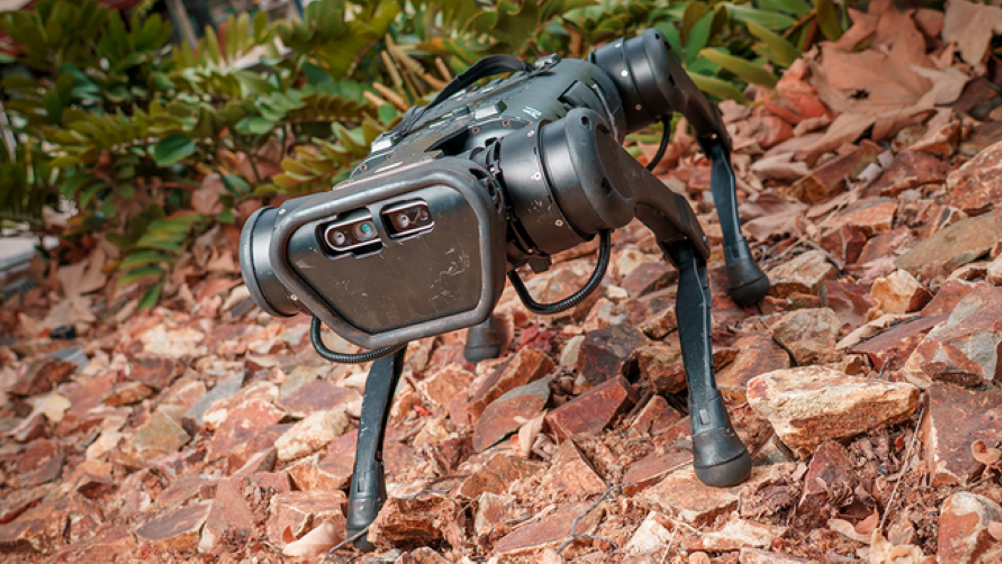Algorithms give four-legged robots speed and agility
Four-legged robots can walk and run on challenging terrain while avoiding obstacles thanks to algorithms developed by a team led by the University of California San Diego.

In tests, the system guided a robot to manoeuvre autonomously and quickly across sandy surfaces, gravel, grass, and bumpy dirt hills covered with branches and fallen leaves without bumping into poles, trees, shrubs, boulders, benches or people. The robot is also said to have navigated a busy office space without bumping into boxes, desks or chairs.
The work brings researchers a step closer to building robots that can perform search and rescue missions or collect information in places that are too dangerous or difficult for humans.
The team will present its work at the 2022 International Conference on Intelligent Robots and Systems (IROS), which takes place from October 23 to 27 in Kyoto, Japan.
The system provides a legged robot more versatility because of the way it combines the robot’s sense of sight with proprioception, which involves the robot’s sense of movement, direction, speed, location and touch.
Register now to continue reading
Thanks for visiting The Engineer. You’ve now reached your monthly limit of news stories. Register for free to unlock unlimited access to all of our news coverage, as well as premium content including opinion, in-depth features and special reports.
Benefits of registering
-
In-depth insights and coverage of key emerging trends
-
Unrestricted access to special reports throughout the year
-
Daily technology news delivered straight to your inbox










Water Sector Talent Exodus Could Cripple The Sector
Maybe if things are essential for the running of a country and we want to pay a fair price we should be running these utilities on a not for profit...